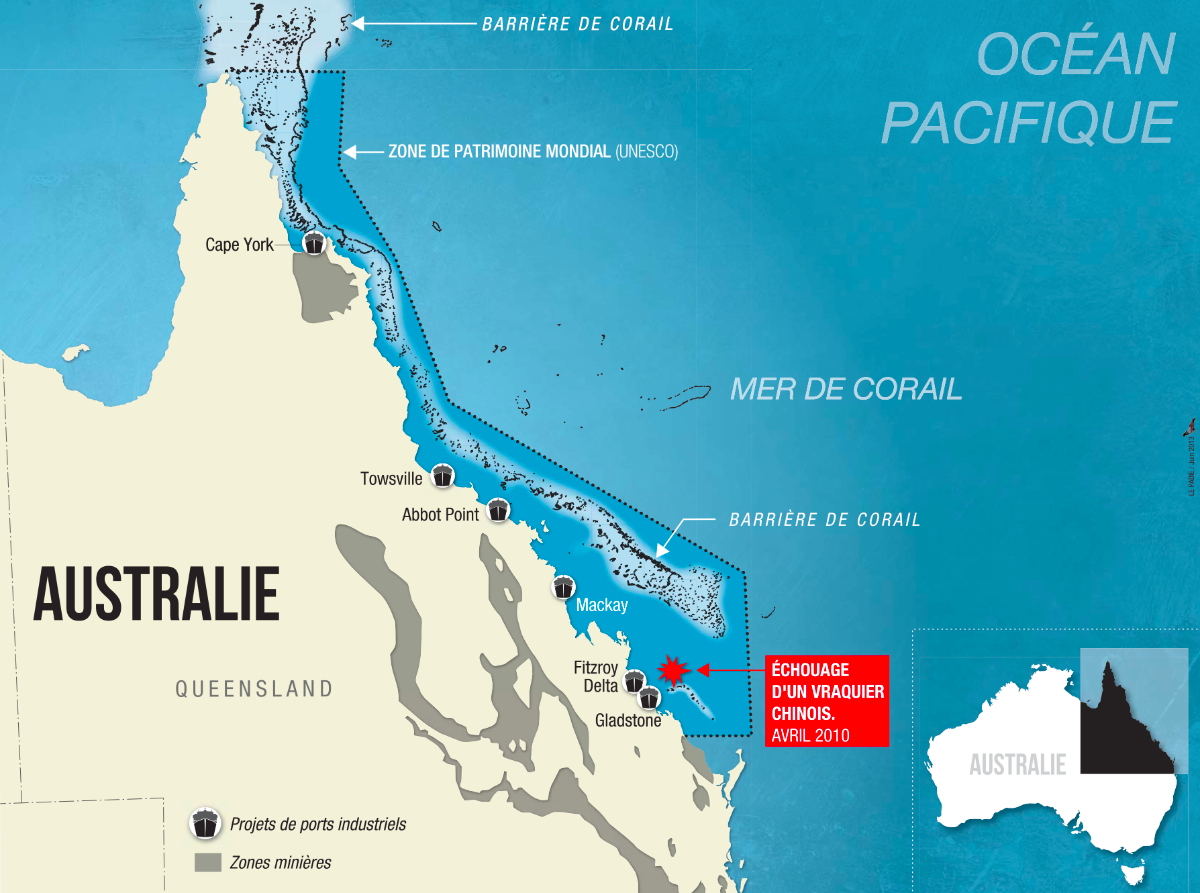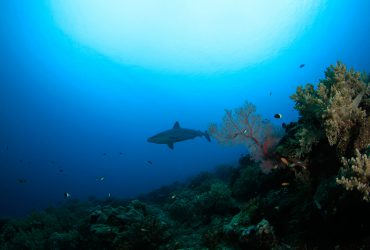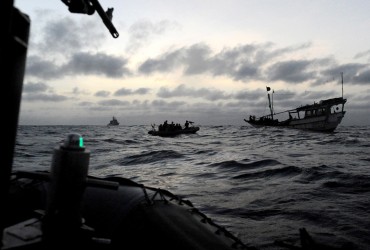The Great Barrier Reef under attack
The news spread like wildfire on the internet. For the first time, 150 Australian scientists united their voice to express their deepest concern. This written cry for help was addressed to the government of Queensland (state situated in the north-east of Australia) who is risking the future of the Great Barrier Reef for economic reasons.
The target of this public declaration is plans of industrial harbours in zones next to or within the marine park, even though this coral reef system stretching for 2 600 km has been part of the UNESCO World Heritage list since 1981.
“In Australia we have such a resource dominated economy, explains Richard Leck, the WWF-Australia campaign director of “Fight for the Reef”. Economic development is a good thing, but ways of minimising the impact on the environment, especially the Great Barrier Reef, aren’t often thought of very well.”
This is the case of the Fitzroy Delta, where the proposal is to build a large coal port right in the middle of a place renowned for its rare flatback turtles (Natator Depressus) rookery and home of the endangered inshore dolphin (Tursiops Aduncus). Another alarming proposal is to put coal facilities right up in the most pristine part of the reef which is the northern section near Cooktown.
“There are also plans to expand some of the existing ports such as Abbot Point which is forecasted to become one of the biggest coal ports in the world, only 50 kilometers away from the Whitsunday Islands. The issue here is that the cumulative impacts aren’t assessed very well…” adds Leck.
The sole construction of these industrial facilities is a threat to the wellbeing of the coral, since millions of cubic meters of rock and mud will have to be dredged in the reef waters, causing massive spoil dumping within the Great Barrier Reef World Heritage Area.
The scientists are particularly concerned with the traffic that these complexes will inevitably create. A shipping superhighway between the continent and the reef will see hundreds of bulk carriers navigate in these dangerous waters. The smallest collision, the slightest error will cause a major disaster in this ecosystem that took thousands of years to form.
In 2010, the country witnessed what will probably happen on a larger scale:
As it was heading towards Asia, the Shen Neng 1, a Chinese bulk carrier 225 metres long filled with 65’000 tons of coal, took an illegal shortcut through the protected area. Traveling full speed, the boat ran aground and drifted along the Great Barrier Reef, causing a three kilometres long gash into the coral as well as an oil spill!
This set of industrial development is unfortunately not the only enemy that threatens the exceptionally fragile environment. Indeed, several other pressures worry the scientists.
Probably the most insidious and damaging stress comes from the rise in water temperature. Even the slightest increase causes the fragile coral to expulse their zooxanthellae that give them their colour. Repeated “bleaching” equals a death sentence.
“The increase in frequency and the intensity of storms (linked to climate change) that occur on the reef cause many damages, explains Richard Leck. The ocean acidification is also threatening the delicate marine life balance.”
 The minute this balance is broken, predatory starfishes have the opportunity to develop out of control. The past decades have seen the Crown-of-thorns starfish (Acanthaster Planci) multiply and become a serious threat to the coral system, partly encouraged by agriculture fertilizers runoff. The sugarcane industry in Queensland is very thirsty of fertilizers and efforts are made to try and contain as much as possible the surplus that used to end up in the ocean.
The minute this balance is broken, predatory starfishes have the opportunity to develop out of control. The past decades have seen the Crown-of-thorns starfish (Acanthaster Planci) multiply and become a serious threat to the coral system, partly encouraged by agriculture fertilizers runoff. The sugarcane industry in Queensland is very thirsty of fertilizers and efforts are made to try and contain as much as possible the surplus that used to end up in the ocean.
Finally, mass tourism must also accept its share of responsibility. In 2012, 2 million people visited the marine park for its unique beauty. That’s over five thousand tourists daily.
More than 50 000 full time jobs are directly related to the Great Barrier Reef, which generates a business estimated of 5,4 billion Australian dollars annually. Unfortunately for this industry, it isn’t hard to predict what will happen if the coral disappears.
A recent study that based its research on observations, came to the astounding conclusion that 51% of the coral cover has declined in the past 27 years.
The Queensland and Australian Government will have to answer the following question: Is it more profitable to invest in the research and conservation of the Great Barrier Reef, or in the fossil fuel industry?
The answer will probably be influenced by an external factor: from 16th to 27th June, the 37th session of the World Heritage Committee is being held in the Kingdom of Cambodia. High on the list of discussion is the state of the Great Barrier Reef. If the Queensland government fails to satisfy the committee’s requirements by June 2014, it is possible that the reef system will be included in the “List of World Heritage in Danger”, also known as the UNESCO list of shame. If this happens, Australia will be in an embarrassing situation, joining, amongst others, the Republic of the Congo which counts its five World Heritage sites on the list due to warfare during the past two decades.
Is it possible that, in a democratic country, one of the planet’s wonder is at war? Most probably.
INFO : This article was first published in OCEAN71 Magazine Journal, on June 20th 2013.





